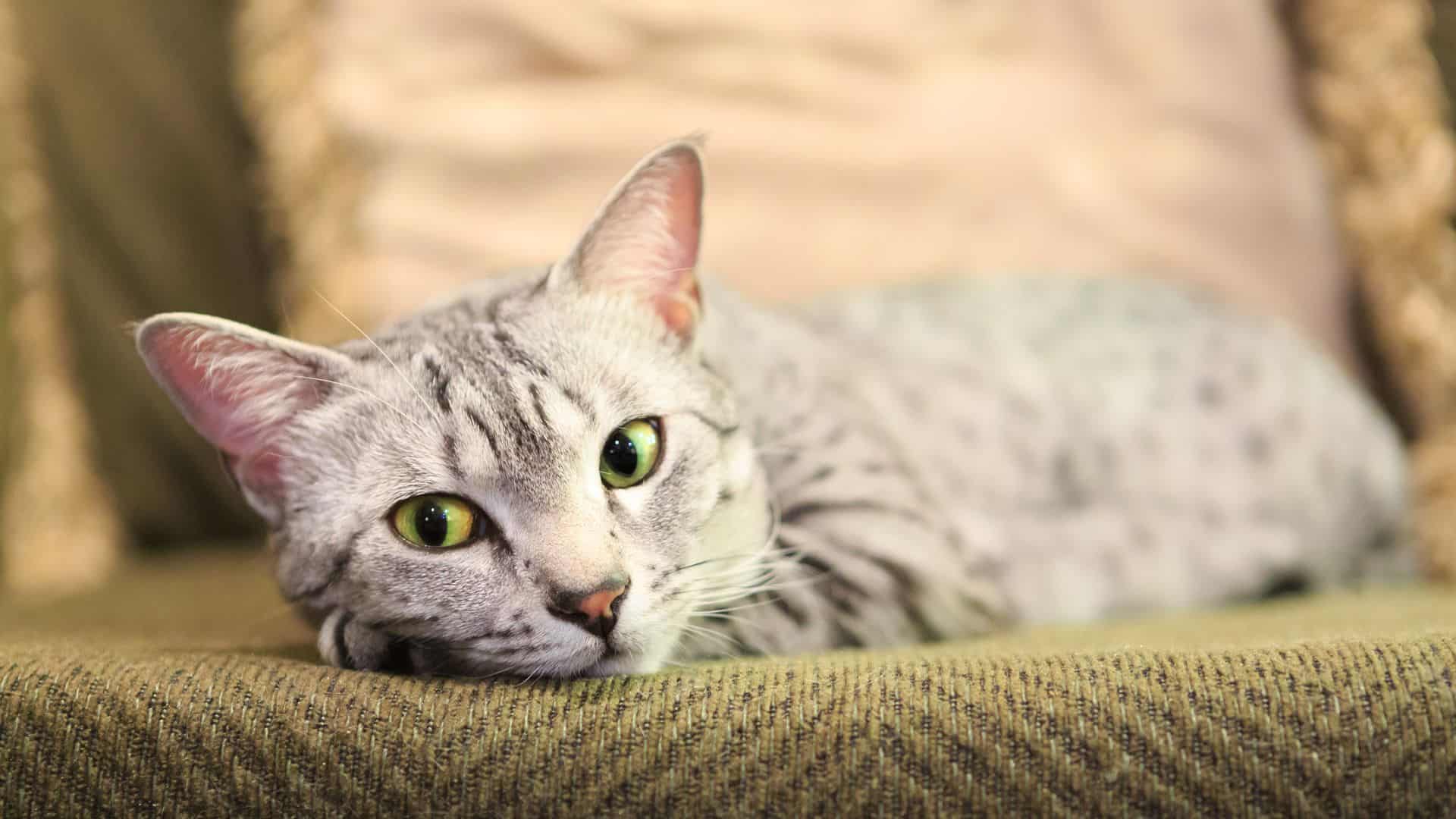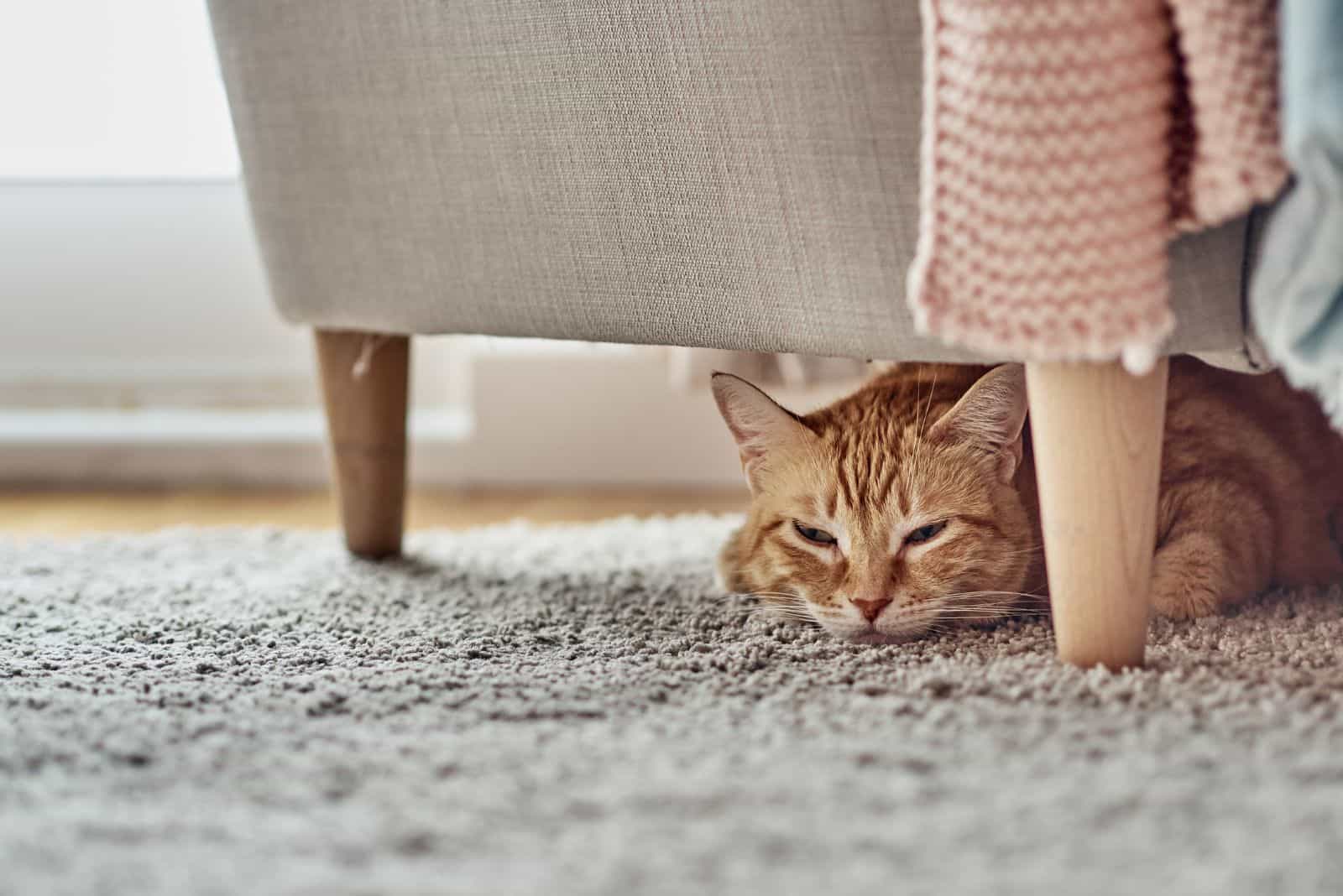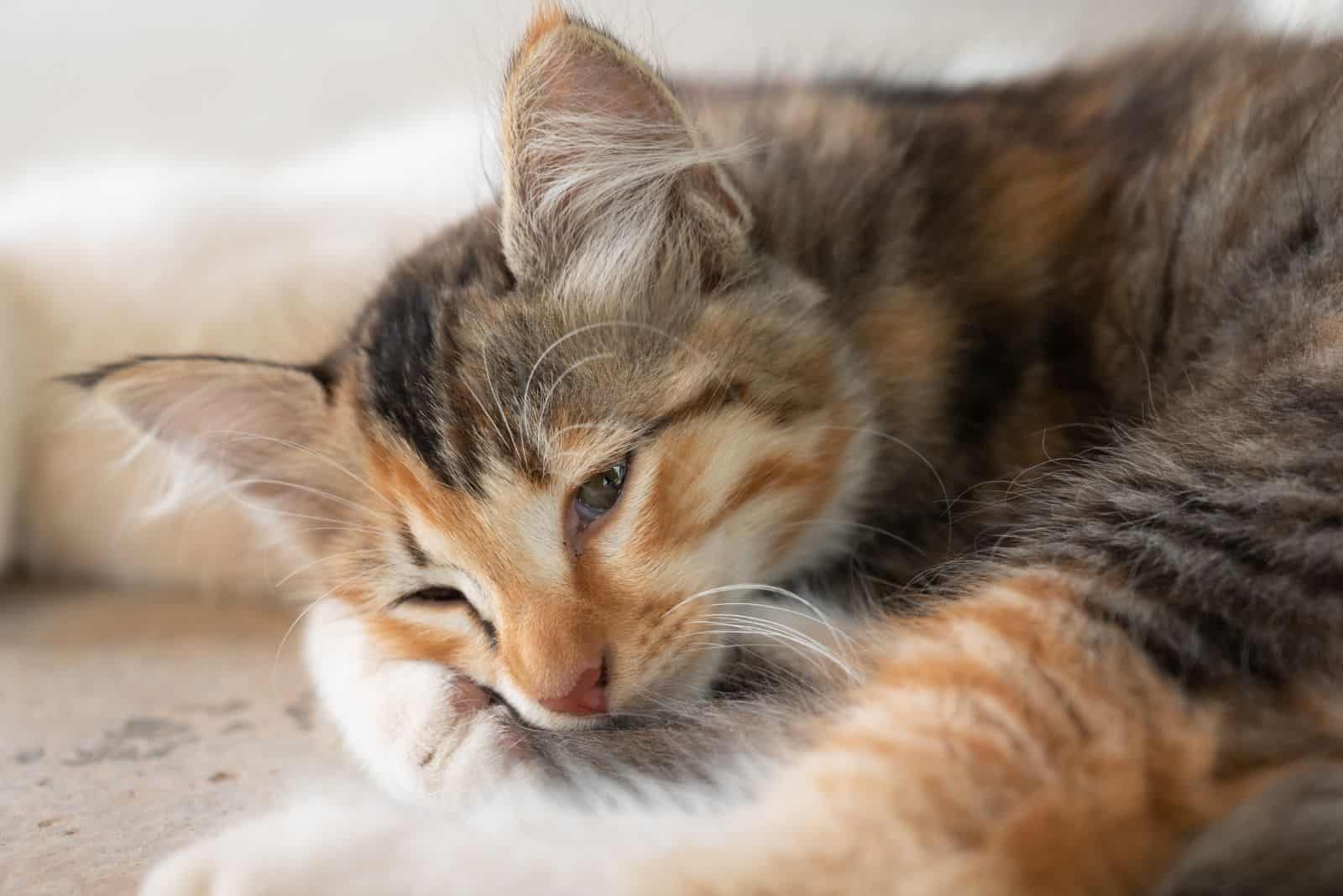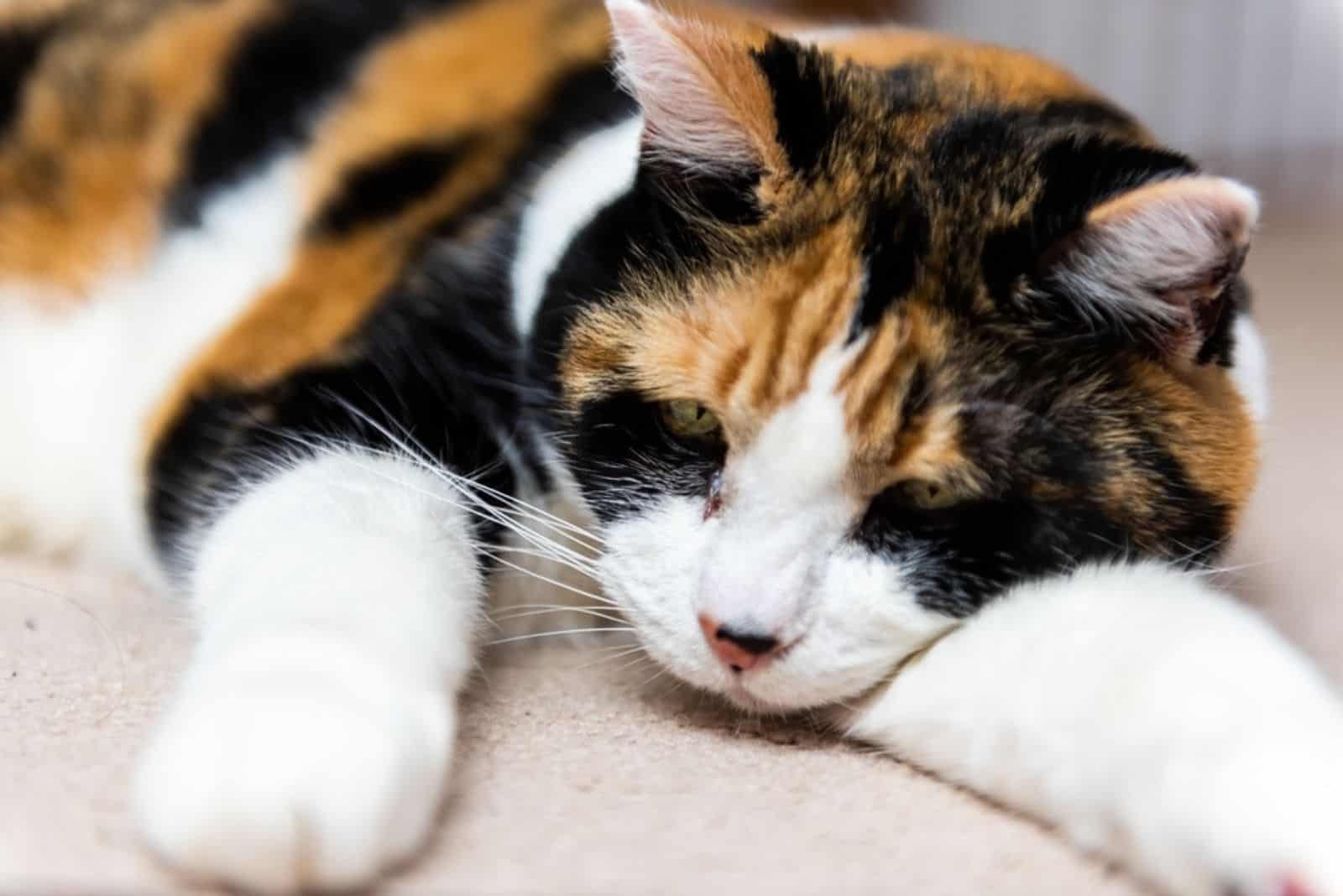Signs Of Cat’s Internal Bleeding And How To Help

Cat’s internal bleeding can be extremely serious but is fortunately curable in many situations. It depends on the cause, so it’s very important to learn about it.
Internal bleeding is a medical term used for losing a large amount of blood that mostly ends up in a cat’s abdominal cavity.
What are the most common indicators of internal bleeding? What are the causes, and where is the bleeding located in your cat’s body? This is all essential information to know. So read on to learn all about it.
Signs Of A Cat’s Internal Bleeding

Cat’s internal bleeding does not happen that often, but it is always good to know more about your cat’s health, mainly because it can be harmful. If you suspect your cat has internal bleeding, consider it urgent!
Internal bleeding can be a life-threatening condition, so it’s vital to seek the help of your vet if you notice any of the following signs.
1. Appetite Loss
Appetite loss is most commonly an early indicator of a health issue. If your cat’s been healthy overall and stops eating, that is a sign of an illness or a decline in health.
Appetite loss is not specific to a cat’s internal bleeding. Cats suffering from severe blood loss will usually stop eating because they won’t feel good or have the energy to eat.
This is especially the case if your cat already showed appetite changes before. If your cat stops eating, it’s best to visit the vet.
2. Cat Is Lethargic
In the case of blood loss, especially if the cause of the bleeding is the cat’s internal bleeding, there is immediately less oxygen reaching the organs and tissues. The lack of oxygen circulation most often results in lethargy.
If not completely lethargic, cats will feel tired and lie down most of the time. Some cats might even hide around the house, often in spots they don’t usually go to. Some will change their sleeping schedules or stop playing and exploring around the house.
These signs can all indicate a more severe illness, as well as internal bleeding, which is why this requires urgent treatment.
See also: Cat Suddenly Lethargic And Weak – Causes & Treatment Options
3. Rapid Breathing

Another sign that might indicate internal bleeding in cats is a change in their breathing pattern. With internal bleeding comes blood loss, and with that, there are fewer red blood cells that normally carry oxygen through the cat’s bloodstream.
In order to get more oxygen flowing through the blood, the cat’s respiratory system tries to make up for it with shallow breaths or by breathing faster.
Generally, it’s good to know your cat’s normal breathing pattern, so you can easily notice a change and how big of a change it is.
Cats that suffer from internal bleeding usually breathe a lot faster, breathe through an open mouth, gasp, or have too much chest movement. All these signs can be extremely severe, so veterinary care is crucial.
Note: Don’t check your cat’s breathing pattern while it is purring. Cat’s breathing patterns while purring are completely different from their normal patterns, so those results are not valid.
4. Pale Mucous Membranes
The easiest way to know if your cat is suffering blood loss or internal bleeding is by checking if it has pale or white gums. The color of your cat’s tongue and gums is a great indicator of different health issues.
If your cat’s mucous membranes are pale or white, it’s definitely a sign of something bad. It is helpful to know the normal color of your cat’s tongue and gums.
When your cat is healthy and feeling well, lift its lip up and see the color of its gums, so it’ll be easier to discern if it’s good or not when your cat starts feeling unwell. Additionally, you should check your cat’s paw pads as well.
Normally, their color is pink; most cats have pink-colored toe beans. However, it’s important to know your cat’s paw pad color (whichever it may be), so you’ll know if the color goes pale, that it can indicate the loss of blood.
5. Visible Blood From A Surgical Incision
If your feline friend had some kind of surgery recently, you should pay attention and care for their surgical incision until it’s completely healed. Your vet will also advise you to check on it every day.
It is concerning if there’s any blood visible during the first couple of days after surgery before the incision heals completely.
The more blood you see, the worse it may be since it can indicate a larger amount of internal bleeding.
You might also want to read: Why Is My Cat Leaving Blood Drops Behind? Explanation Below!
Where The Internal Bleeding Comes From Is Important

There can be many different signs that might indicate internal bleeding, so vets most commonly do blood tests which greatly aid in their diagnosis.
Now, to know where exactly the internal bleeding is, your vet will most probably take an x-ray or radiograph so they can be more certain. The location of internal bleeding in cats is important since it influences other symptoms as well.
1. Abdominal Bleeding
Internal bleeding that is caused by a trauma occurs rather quickly, and these situations require immediate veterinary attention. Most commonly, in cases like these, the cat’s liver and spleen are affected.
Other organs and life-threatening visible wounds can occur as a result of trauma as well. Internal ailments can also cause abdominal blood vessels to rupture and therefore bleed into your cat’s abdominal cavity.
The abdominal cavity is quite large and can hold a lot of blood. Cats can also experience shock as a result of abdominal bleeding. Common symptoms of abdominal bleeding in cats include:
• inability to stand up
• weakness and lethargy
• visible wounds
• increased heart rate
• blood in cat’s stool or vomit
• difficulty breathing
• broken bones or limping
• low blood pressure
2. Blood Going Into A Cat’s Lungs
In the case of a pulmonary contusion or hemorrhage of a cat’s lung, the cat’s ability to breathe is affected. If your cat’s lungs get torn or if a cat suffers direct trauma to its chest, internal bleeding can occur, resulting in blood going into the lungs.
If this is the case with your cat, you’ll notice your cat coughing up blood, pale mucous membranes, and different breathing patterns, or your cat will be barely able to breathe at all.
3. Blood Going Into Cat’s Chest
If there’s blood going into your cat’s chest, i.e. on the outside of its lungs, it can manifest through shallow breaths, a blue tinge to the cat’s gums, your cat feeling lethargic, or being out of breath.
4. Internal Bleeding In Cat’s Brain

Tumors that leak blood or an injury to a cat’s head can lead to intracranial bleeds, i.e. internal bleeding within the cat’s skull.
Because the brain occupies a limited space inside the skull, the bleeding will eventually put pressure on local brain tissue, which will result in impaired brain function.
Tremors, limping, inability to walk, behavioral changes, or confusion are all symptoms of this condition, which can manifest in different ways.
5. Internal Bleeding In Cat’s Eye
Bleeding inside of the cat’s eye can be visible from the outside using an ophthalmoscope. This doesn’t affect the cat’s overall blood circulation since there’s only a small space in the cat’s eye that can collect the blood.
However, it can cause blindness or affect the cat’s vision to a certain degree.
6. Internal Bleeding Under Cat’s Skin
Bleeding that occurs under a cat’s skin is commonly referred to as a bruise because the skin is so tight. This type of bleeding can sometimes form in lumps, i.e. hematoma, which most commonly occurs on the cat’s ear.
7. Bleeding Into The Retroperitoneal Space
Retroperitoneal space is a small pocket hidden behind a cat’s kidneys. It can be difficult to detect when bleeding into this pocket occurs, so it’s usually detected by an experienced diagnostic veterinary sonographer.
Most Common Reasons For Cat’s Internal Bleeding

Internal bleeding in cats can happen for a number of reasons, and the severity of a cat’s illness is entirely dependent on its cause. Internal bleeding can be caused by a variety of factors, and the cause also influences and helps determine the diagnosis.
Read on to learn more about the most common causes of a cat’s internal bleeding and how you can recognize its severity.
1. Cancer
Cancer is, unfortunately, one of the causes of internal bleeding in cats and is one of the most difficult causes to treat.
Cats are great at hiding pain and discomfort, and they can hide underlying causes and conditions for a long time before we notice that something’s not right. Cancers, most often, don’t show any signs when your vet does blood tests.
Additionally, your cat might even appear to be in good health, eating and drinking, and this is exactly why cancers don’t get treated on time. Unfortunately, a lot of cats suffer from internal bleeding caused by cancer and become severely ill.
How Can You Know Your Cat Has It?
Cancers might be present in a cat’s body for weeks or even months before cat owners notice anything. This means that when cancer bleeds out, it has probably been growing inside for some time before.
Your cat’s treatment will depend on your cat’s overall condition and the type of cancer it has. However, the most important thing you need to do is go to the vet.
2. Intestinal Parasites
Intestinal parasites in cats, especially outdoor cats, are one of the most common causes of internal bleeding. If your cat is infected with parasites, they can cause intestinal bleeding.
Hookworms are the most common parasites that cause cat internal bleeding. Cats get infested with them by ingesting, in any way, another animal’s feces which is infested with hookworms.
Your cat might walk through cat litter or water, which has been in contact with infected poop, and that’s that. If you own multiple cats and they share a litter box, only one of them being infected by parasites is enough to get them all infected.
Kittens, as well, are at a higher risk of intestinal parasite infestation since they can contract hookworms through their mother’s milk.
How Can You Know Your Cat Has It?
Your cat might not show any unusual symptoms, but your vet will be able to see parasite eggs during a fecal exam. However, your cat might also show some symptoms.
Your cat might get diarrhea, which will be either black or bloody, in the case of intestinal parasites and internal bleeding combined. If your cat has black diarrhea, it indicates bleeding in its upper intestinal tract.
Cats can also exhibit bloated abdomens, as well as experiencing weight loss and vomiting. If your cat exhibits any abnormal symptoms or is weak or excessively tired, don’t wait anymore. Go to your vet.
See also: Importance Of Cat Poop Color Chart – Understanding Felines
3. Trauma

Most cats are very sensitive to trauma. In the veterinary clinic, we often see cats who, unfortunately, got hit by a car or fell from a tree or even a roof. Sometimes owners bring in cats who were attacked by other animals as well.
In all of these cases, cats suffer some kind of trauma and are extremely prone to internal bleeding.
Common signs of internal bleeding caused by trauma include cats breathing through their mouth, pale gum color, bloated abdomen, heavy breathing, or rectal bleeding. Cats might also suffer from internal eye bleeding after they’ve suffered trauma.
How Can You Know Your Cat Has Suffered A Trauma?
In the case of trauma, other than internal bleeding, there will be visible wounds on your cat, internal wounds, and possibly external bleeding as well.
In case of any trauma, you should take your cat to be examined by a vet. No matter if you suspect internal bleeding or not.
• Check out 15 Traumatized Cat Symptoms And How To Deal With Them for more info.
4. Poison Ingestion
This is not that common, but there are some toxins that can cause cat internal bleeding. Most commonly, the toxin that causes internal bleeding in cats is rodenticide (rat poison), or anticoagulant rodenticide, to be specific.
If you’ve noticed intruders inside your home and you’ve tried to deal with the problem by putting rat poison around, be extremely cautious.
Cats can crawl into the tightest spots, and they sure are curious. Cats that ingest poison are at a high risk of dying if they’re not treated on time.
How Can You Know Your Cat Has Ingested Poison?
Common symptoms of toxic ingestion include pale gum color, heavy breathing, weakness, bleeding from the rectum, face, or eyes, coughing up blood, or vomiting.
Human meds, especially blood thinners, can also cause internal bleeding in cats. If anyone in your home uses them, make sure that they’re out of your cat’s reach. Otherwise, the consequences for your cat might be fatal.
If you think that your cat might be suffering from poisoning, call your vet as soon as possible! You can also check the Animal Poison Control Website to read about it or give them a call if you suspect a certain source of toxins.
Final Thoughts
Cats can suffer from internal bleeding without any warning or visible symptoms. Internal bleeding most commonly occurs because of trauma. Other reasons for the occurrence of a cat’s internal bleeding are intestinal parasites, poison ingestion, or cancers.
There are also some other less common causes, like blood clotting disorders or other ruptured tumors. You should always watch out for symptoms like pale gums, weakness, lethargy, excessive hiding, and changes in your cat’s breathing pattern.
Fortunately, internal bleeding isn’t very common and is curable in most cases. Just keep a close eye on your feline friend when they’re healthy, so you’ll notice more easily when something’s wrong.
Take good care of your cat, and you’ll see that almost everything can be cured when you act on time!






